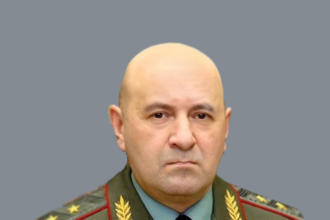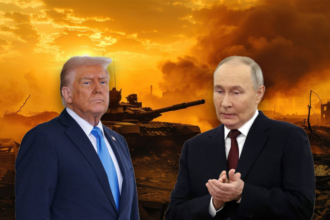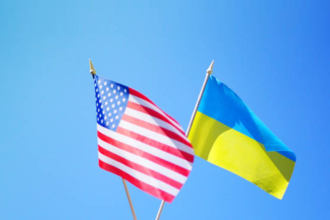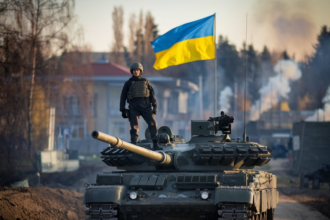Following a week of increased tensions defined by Russia launching a new missile on Ukrainian territory, Russia and Ukraine have engaged in a frenzy of air strikes. Attacks aimed at civilian and military facilities have seen a notable rise as both sides boost their military operations. According to Ukrainian President Volodymyr Zelensky, Russia has started around 1,500 strikes across Ukraine since Sunday night, impacting roughly half of the nation and resulting in scores of injuries.
- For what purposes are Ukraine's strikes on Russian soil meant?
- How Has Russia Responded to Ukrainian Attacks?
- In what ways have Russian strikes affected Ukrainian cities?
- With attacks, missiles, and drone strikes, how has Ukraine responded?
- In what capacity is the US involved in the conflict?
- How are Russian strikes affecting Ukraine's energy infrastructure?
For what purposes are Ukraine's strikes on Russian soil meant?
Ukraine’s military reported multiple strategic attacks within Russia during this escalation. Targeting the Bryansk and Kursk border areas, Ukrainian soldiers strike a significant oil storage south of Moscow. A military spokesman from Ukraine declared, “We have struck critical infrastructure deep inside Russian territory.”
The most crucial attack came when Ukraine targeted the Resursnefteprodukt oil facility in the Kaluga area, southeast of Moscow. Though the Russian military has not acknowledged the degree of the damage, Ukrainian sources claimed that the hit resulted in significant explosions and a big fire at the site. Although he did not specify the degree of the damage, Regional Governor Vladislav Shapsha noted that trash from fallen drones started a fire at an industrial company.
How Has Russia Responded to Ukrainian Attacks?
Russia has upped its missile strikes on Ukraine in response to reprisals. With Russia striking Dnipro city with the Oreshnik intermediate-range ballistic missile, the military escalation took a significant turn. Following a week of elevated tensions, the missile attack saw Ukraine first send US and British missiles into Russian territory.
“President Zelensky said Russia has fired over 1,500 missiles across Ukraine since Sunday.” “This unrelenting attack has targeted civilian infrastructure, leaving many injured and escalating the suffering of the Ukrainian people.”
In what ways have Russian strikes affected Ukrainian cities?
For Ukrainian cities, the Russian strikes have had dire repercussions; Kharkiv is among the most brutal hit. In a missile strike on Kharkiv, Governor Oleh Synehubov said 23 persons were injured; a rescue effort is currently under progress. The s-400 missile system of Russia was blamed for the strike.
“The S-400 missile is one of the most advanced systems Russia has, and it was used with devastating effect on Kharkiv,” Synehubov remarked in a statement. “The damage to residential buildings and the pandemonium it generated is unthinkable.”
Likewise, Odessa was singled out for a missile strike that left ten people dead and seriously damaged a university sports hall, schools, and residential buildings. Strikes in the Kherson, Zaporizhzhya, and Chernihiv areas have caused at least five more injuries. Russia’s larger plan to undermine Ukraine’s infrastructure as winter sets in calls for these persistent strikes.
With attacks, missiles, and drone strikes, how has Ukraine responded?
Ukraine has upped its strike as Russian assaults get more intense. Using US-supplied Atacms missiles, Ukrainian military sources claimed that overnight, they targeted a central Russian air facility in the Kursk region. Though the Russian military has not verified the strikes, eight precise missiles allegedly struck the Khalino air base in Kursk. Military bloggers connected with Russian forces speculated that the air base was seriously damaged, although it was difficult to confirm the assertions since dense clouds hid satellite photographs.
A video posted on social media showed brilliant flashes in the sky over the Kursk area, which local people called missile interception-induced explosions. It is yet unknown, though, if the Atacms missile strikes directly led to the flashes. “We cannot confirm with certainty whether these strikes were the result of Atacms missiles, but the explosions were significant,” a Ukrainian military spokesman remarked.
In what capacity is the US involved in the conflict?
Reports have surfaced implying that the US authorized Ukraine to employ longer-range atomic missiles in the conflict, a move perceived as in response to Russia’s deployment of North Korean troops. The Atacms missiles are said to be limited to targets within the Kursk region, where North Korean forces are engaged in a Russian offensive to retake territory lost to Ukraine during the autumn.
Designed to strike targets deep within Russian territory, US President Joe Biden’s government has approved the employment of these powerful weapons. “The Atacms missiles are meant to target Russian infrastructure and supply lines in the conflict zones, but the presence of North Korean troops has led to strict limitations on their use,” a US government source close by clarified.
How are Russian strikes affecting Ukraine's energy infrastructure?
Russian forces have kept attacking Ukraine’s electricity infrastructure in response to her strikes, further aggravating the suffering experienced by the people. Aiming to make things as tough as possible for both people and the Ukrainian military, these strikes are a part of Russia’s larger plan to disturb Ukraine’s energy supplies as winter approaches.
“Russia has methodically targeted our energy grid,” Ukrainian Prime Minister Denys Shmyhal remarked. “These attacks are meant to break our will, but we will not let them succeed.”
What chances for peace exist, and what are the worldwide consequences of the war?
Russia and Ukraine are vying for dominance before US President-elect Donald Trump arrives in January. Hence, the war shows no signs of abating. If elected, Trump promised to finish the conflict “within hours,” although he did not say specifically how he intended to accomplish this.
The world community observes intently as the situation gets more intense, hoping for a diplomatic solution but also ready for more military clashes.
“We still are resolved to defend our sovereignty and safeguard our people,” President Zelensky said. “The world has to realize that the fight for Ukraine is also a fight for global security and freedom.”
End of Russian Gas Transit through Ukraine: A Turning Point for the EU








